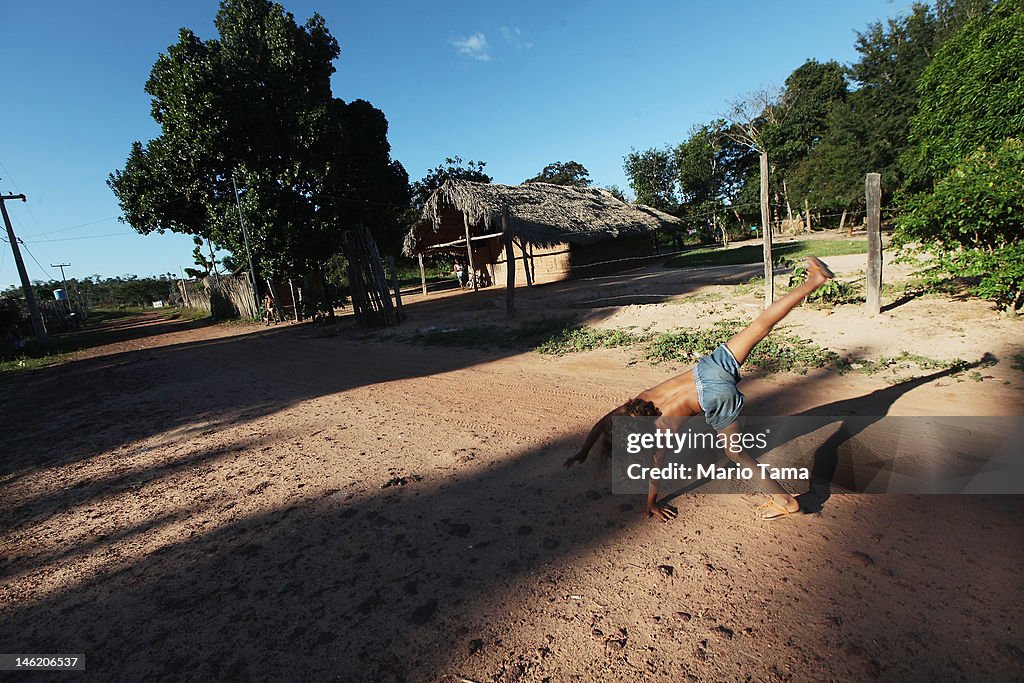Brazil Faces Environmental Challenges in Amazon Ahead of Rio+20 Earth Summit
ARARIBOIA INDIGENOUS RESERVE, BRAZIL - JUNE 10: A Guajajara indigenous tribe member cartwheels in her village on protected Amazonian indigenous land on June 10, 2012 in the Arariboia Indigenous Reserve, Maranhao state, Brazil. Tribe members say their forests are being plundered by illegal loggers who killed tribe member who attempted to resist. According to the National Institute for Space Research (INPE), which tracks rainforest destruction by satellite, 242 square kilometers in the reserve have already been destroyed. From 1987-2011, 1.1 million hectares of wood disappeared in protected indigenous reserves in Maranhao state. The Brazilian Amazon, home to 60 percent of the world’s largest forest and 20 percent of the Earth’s oxygen, remains threatened by the rapid development of the country. The area is currently populated by over 20 million people and is challenged by deforestation, agriculture, mining, a governmental dam building spree, illegal land speculation including the occupation of forest reserves and indigenous land and other issues. Over 100 heads of state and tens of thousands of participants and protesters will descend on Rio de Janeiro, Brazil, later this month for the Rio+20 United Nations Conference on Sustainable Development or "Earth Summit". Host Brazil is caught up in its own dilemma between accelerated growth and environmental preservation. The summit aims to overcome years of deadlock over environmental concerns and marks the 20th anniversary of the landmark Earth Summit in Rio in 1992, which delivered the Climate Convention and a host of other promises. Brazil is now the world’s sixth largest economy and is set to host the 2014 World Cup and 2016 Summer Olympics. (Photo by Mario Tama/Getty Images)

PURCHASE A LICENCE
How can I use this image?
£375.00
GBP
DETAILS
Restrictions:
Contact your local office for all commercial or promotional uses..
Credit:
Editorial #:
146206537
Collection:
Getty Images News
Date created:
10 June, 2012
Upload date:
Licence type:
Release info:
Not released. More information
Source:
Getty Images South America
Object name:
70161549